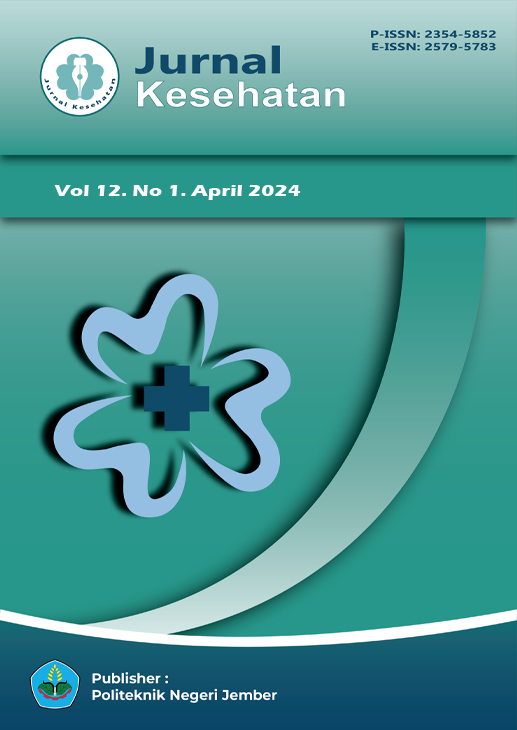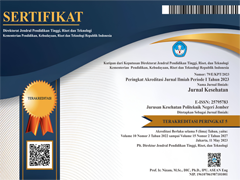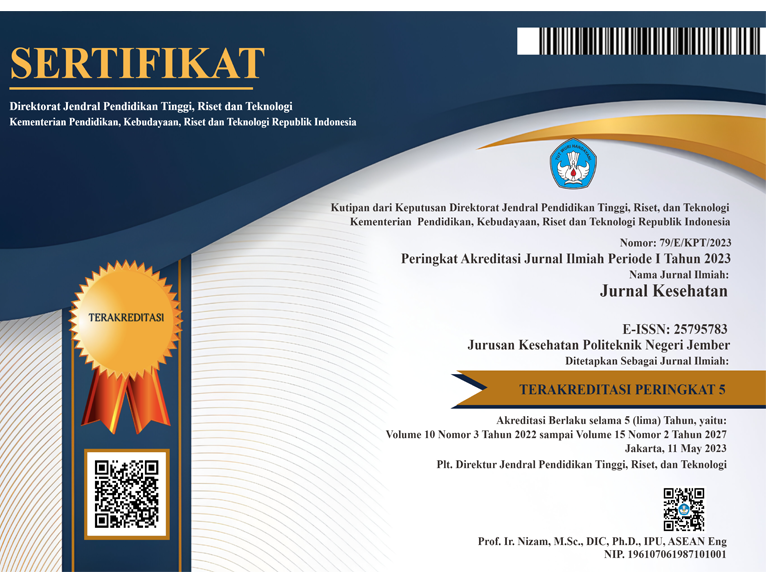Redesain Ruang Filing Rawat Jalan Berdasarkan Aspek Ergonomi di UOBK RSUD Dr. Mohamad Saleh Kota Probolinggo
DOI:
10.25047/j-kes.v12i1.514Downloads
Abstract
The storage space for outpatient medical record at UOBK RSUD Dokter Mohamad Saleh is not accordance with the ergonomic aspect because the distance between the shelves is too narrow, which is around 50-60 cm. This makes officers unable to collect medical record simultaneously with other officers, so that it can cause delays in the distribution of medical record files to multiple destinations. This study aims to redesign the spatial layout for storing outpatient medical record based on ergonomic aspects at the UOBK RSUD Dokter Mohamad Saleh. The type of research used is descriptive qualitative. The research instrument uses a checklist sheet and interview guide. The results of this study are a storage layout design with a storage space area of 36 m2 with the addition of room and shelves for inactive medical record, the distance between shelves is 900-100 cm which is in accordance with the standards and the addition of work equipment, namely shelves for inactive files, work table and one computer unit. The conclusion of this study is the redesign of the outpatient medical record storage layout trying to be able to meet the requirements according to standards and adjust conditions in the field, namely the addition of room area and shelves for inactive medical record and also the addition of work equipment.
License
Copyright (c) 2024 Tsalits Maulidah Hariez, Vionanda Choirunisa, Hartaty Sarma Sangkot

This work is licensed under a Creative Commons Attribution-ShareAlike 4.0 International License.
Authors who publish in this journal agree to the following terms:
1. Copyright belongs to the medical journal as a publication
2. The author retains copyright and grants the journal rights to the first publication carried out simultaneously under a Creative Commons Attribution License which allows others to share the work with an acknowledgment of the author's work and initial publication in this journal.
3. Authors may enter into separate additional contractual arrangements for the non-exclusive distribution of the work (eg sending it to an institutional repository or publishing it in a book) with acknowledgment of initial publication in this journal.
4. Authors are permitted and encouraged to post work online (eg in institutional repositories or on their websites) before and during the submission process, as before and larger citations of published work (see Effects of Open Access).
Selengkapnya tentang teks sumber ini














